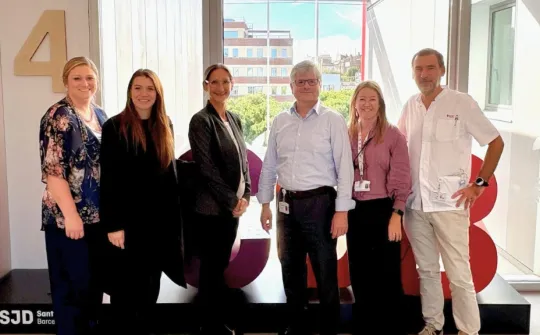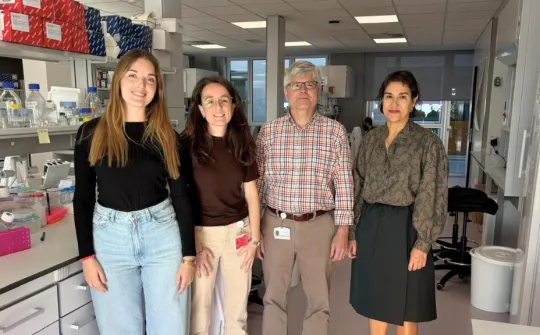Researchers generate a stem cell-based model to study an ultra-rare disease that causes childhood parkinsonism

A research team formed by the IRSJD, the IDIBELL, the IIB Sant Pau and the UB has managed to reproduce the characteristics of the disease and the response of patients to treatment
Researchers from the Bellvitge Biomedical Research Institute (IDIBELL), the Sant Joan de Déu Research Institute (IRSJD), and the UB have presented a new model based on human stem cells of an ultra-rare genetic disease that affects children called Tyrosine Hydroxylase Deficiency (THD). This study were published in the journal EMBO Molecular Medicine, and the project were financed by the Fundació La Marató de TV3.
THD causes a significant decrease of dopamine in the brain, one of the most relevant neurotransmitters in the central nervous system, and usually affects pediatric patients, causing childhood parkinsonism. Some patients improve with treatment, but others are refractory and continue with severe motility symptoms and intellectual disability.
The creation of a cellular model, key element to this research
The model published in the journal EMBO Molecular Medicine, which reproduces the pathological characteristics of the disease, was created from patients' skin cells reprogrammed into pluripotent stem cells, capable of transforming into any cell type, and which subsequently were differentiated into neurons.
The cellular model also reproduces the patients’ response to treatment. Dopamine only reverses the symptoms of patients with mild THD; on the other hand, severe patients do not respond to treatment and finally develop cognitive impairments.
One of the most hopeful observations of the work is that, in the model that reproduces the most severe condition of THD, the early administration of dopamine, when the neurons are still differentiating, prevents the disease defects. This result suggests that treatment could work in the most severe patients if it applies during brain development.
The work is included in the project to study childhood parkinsonism financed by the Fundació La Marató TV3 led by Dr. Consiglio and Dr. Garcia-Carzorla. The work also received support from the European Research Council (ERC), the Ministry of Economy and Competitiveness (MINECO), the Ministry of Science and Innovation (MCIN), the Next Generation Funds (EU), the Carlos III Health Institute (ISCIII), the European Regional Development Fund (FEDER), and the State Research Agency (AEI).



